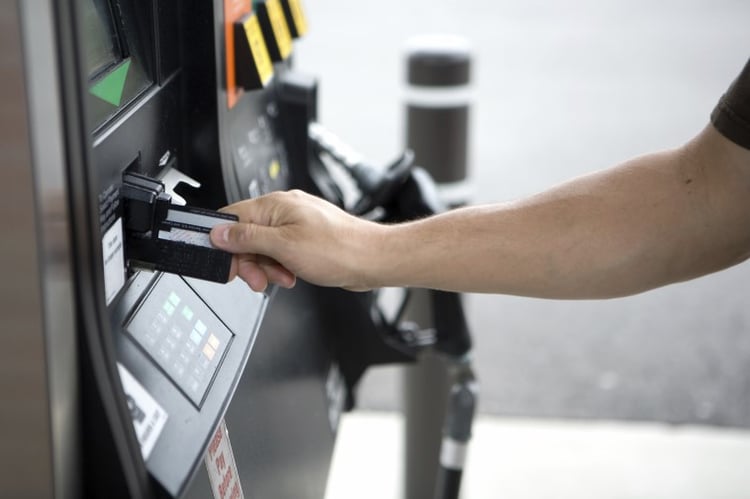
Fleet managers have challenging jobs supervising a team that is constantly on the move. To help support them as they conduct their vital work, we’ve compiled some fleet card management best practices that can be implemented to make their jobs easier. As you read through, you may find that your program lacks some of the features that we highlight. Here is an overview of our fleet fuel cards.
Fleet card management requires proper controls.
While purchase controls simplify fleet card management for your team, it is essential to consider common roadblocks drivers can face before creating your restrictions. Often, managers will decide to restrict fueling to the exact number of transactions that their drivers may need in a day. After all, that should be all it takes to keep your vehicles running, right? Unfortunately, the world is full of little frustrations that can ruin the best-laid plans. If managers restrict their drivers to the exact number of purchases needed in a day, they inevitably will deal with frantic calls about faulty pumps or partial fillings that prevent drivers from getting a full tank. That’s why we advise everyone to authorize for one extra transaction each day so drivers are able to get the fuel they need without reaching out for additional authorization. Adding gallons or dollars per day restrictions are another way to protect against too much fueling, and it is easy to determine what limit to set by reviewing your previous fuel spend.
Though managers don’t want to restrict too tightly, it is essential to have some limits in place to prevent theft or employee misuse before it happens. Setting maximum limits prevents fuel spend beyond ordinary needs. Managers should review previous invoices to get an idea of their drivers’ spend per day, week, and month. This will give a ballpark range of the ideal maximum transaction limits for each time period. With the CFN fuel card and some OTR cards, managers can even limit transactions to the exact gallon capacity of their vehicles. This prevents many headaches down the road, so it’s essential to take a few moments to set maximums for their cards.
Check your invoices or activity online.
When work piles up, it can be easy to delay reviewing fuel invoices. But managers should always take time to comb through their account activity and confirm that all of the charges fit with the company's fueling policy. This is the perfect time to confirm that drivers are not filling up at unapproved or higher priced sites
Ultimately, the most important thing to check for is unusual activity. Reviewing invoices is the best defense against theft or misuse. Proper fleet card management requires that you monitor your online activity and immediately alert your card provider about any suspicious activity.
Capture both driver and vehicle information.
When you first set up your program, you have the option of choosing between driver and vehicle cards. Though both systems are effective, the best fleet card management practice relies on one key factor: whether your drivers rotate vehicles. To help make this decision, we’ve penned out a comprehensive driver and vehicle card comparison. In either case, setting up unique PINs for each driver reduces the risk of theft or abuse and allows managers to track each driver’s fuel usage.
Utilize odometer entry and MPG reports.
Once fleet managers have set up the correct program for their fleet, a fleet card management best practice is to walk their drivers through the process of using their card. During this training, place additional emphasis on the need to enter the vehicles’ odometer readings at each fill up. Odometer readings are often overlooked during day-to-day business activities, but they can actually catch problems early. Poor MPG performance can be indicative of bad driving habits, including idling unnecessarily, speeding, or quick acceleration and braking. Alternatively, it can indicate that the vehicle needs maintenance for possible transmission issues, or even just deflated tires. P-Fleet automatically generates MPG reports in our invoices, so it’s easy to catch these issues early. If you notice that an employee is getting lower miles per gallon than their counterparts, it can indicate that they are skimming fuel off their transactions for personal use, so it is essential to look for anomalies in your MPG reports.
Use fuel transaction alerts in your fleet card management process.
Though alerts are important to properly managing your program, many companies are not using them to their full potential. Obviously, managers should always be on the lookout for fraudulent activity, but it is also important to monitor employee behavior. Alerts can instantly notify you if a driver fills up outside of regular working hours, allowing you to follow up quickly and ensure that their purchase was legitimate. Additionally, alerts based on products purchased can notify you of employees using an unauthorized fuel product.
Implement a driver fuel card policy.
After implementing the best practices and training your drivers, it is time for them to acknowledge that they understand how to use the cards properly. We recommend creating a driver fuel card policy and having each of your drivers sign it. The policy will detail what is authorized, expected data entry at the pump and the consequences of not following the policy. It is a key component for any fleet card management program.
Conclusion
Being a fleet manager requires the ability to multitask, supervise a remote team, and juggle oversight of many activities. We hope that everyone takes the time to read through our best practices for fleet card management and protect their companies.




